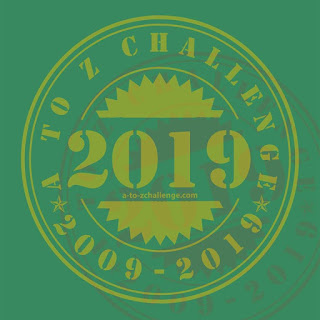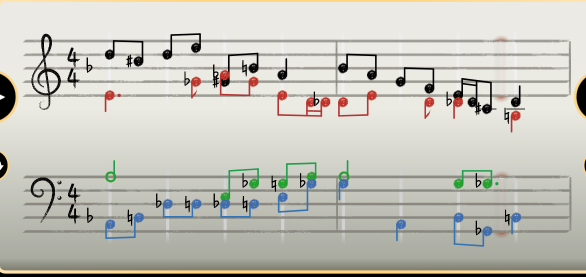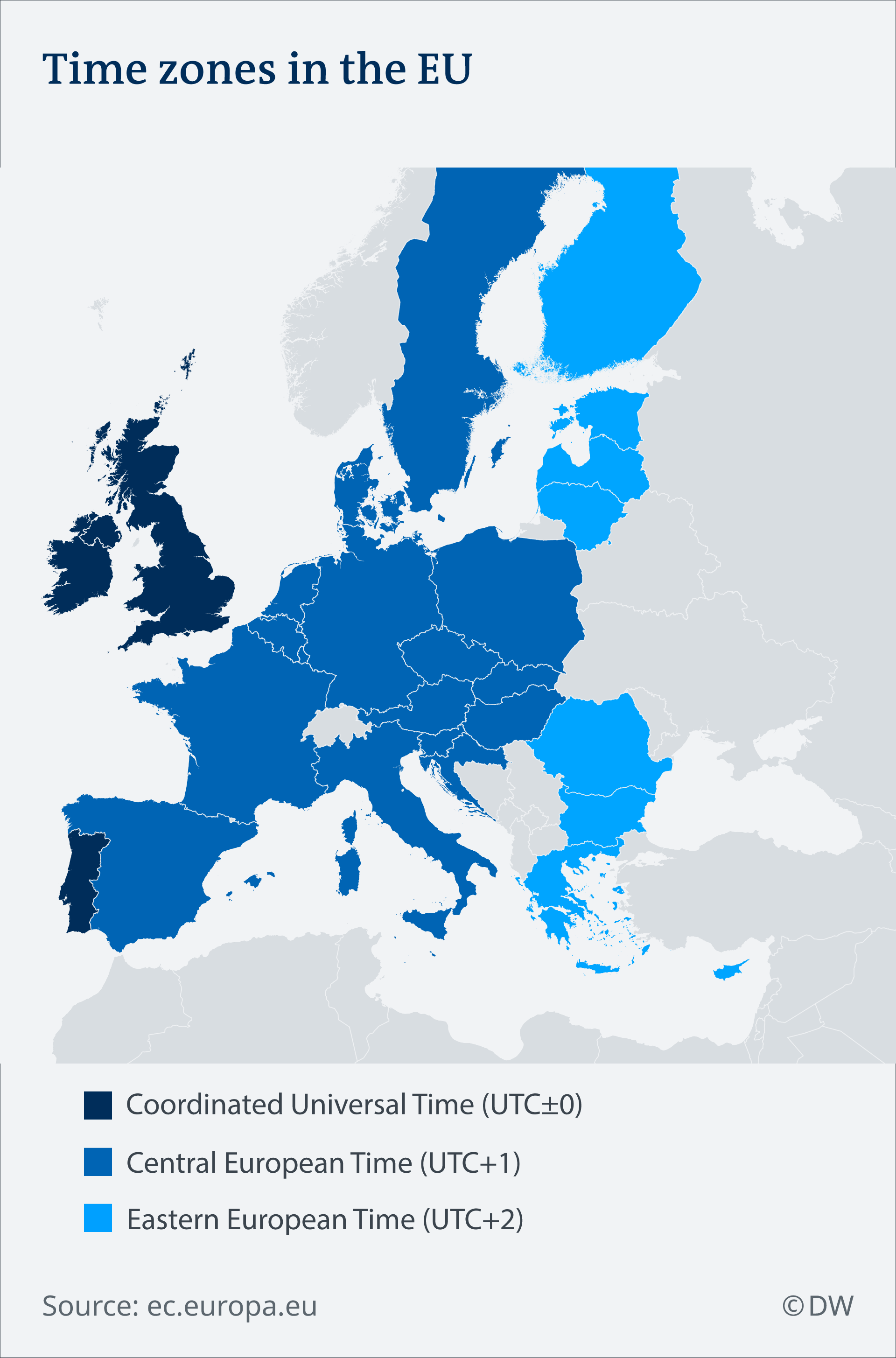 Once again, the Daily Parker will participate in the Blogging A-to-Z challenge, this year on the theme: "Basic Music Theory."
Once again, the Daily Parker will participate in the Blogging A-to-Z challenge, this year on the theme: "Basic Music Theory."
For the A-to-Z challenge, I'll post 26 entries on this topic, usually by 7am Chicago time (noon UTC) on every day except Sunday. I'll also continue my normal posting routine, though given the time and effort required to write A-to-Z posts, I many not write as much about other things.
This should be fun for you and for me. Music theory explains how and why music works. Knowing about it can help you listen to music better. And, of course, it'll help you write music better.
The first post will be on April 1st.
(You can see a list of last year's posts here.)
Today is Johann Sebastian Bach's 334th birthday, and to celebrate, Google has created a Doodle that uses artificial intelligence to harmonize a melody that you can supply:
Google says the Doodle uses machine learning to "harmonize the custom melody into Bach's signature music style." Bach's chorales were known for having four voices carrying their own melodic line.
To develop the AI Doodle, Google teams created a machine-learning model that was trained on 306 of Bach's chorale harmonizations. Another team worked to allow machine learning to occur within the web browser instead of on its servers.
The results are...interesting. (I'm about to get my music theory nerd on, so if that's not your bag you can wait until I post something political this afternoon.)
Here's a little d-minor melody I whipped up:

The basic harmonic structure of this melody is i-V7/V-V-vi-V-i. Even though I haven't taken a music theory course in [redacted] years, I can probably harmonize this melody ten times without breaking a sweat. Basically, on the beats, you've got d minor, a minor on &2, E major, A major; then in the second bar, Bb major, g minor, E major, A major, d minor. (Note that some of those are passing harmonies that expand other harmonies.)
Google's AI did not do that. It actually got a little flummoxed. Here's one example:

Oh, dearie dearie me. I think one of the problems is that it thought I had done something really weird in F-major instead of something prosaic in d-minor. And it doesn't provide any way of tweaking the harmonization.
So, really very cool AI going on there, but not yet ready for prime time. Still worth playing around with. If I had more time I'd try some simpler melodies to see if it helps.
(If you liked this post, by the way, you will love what I do in April.)
On March 4th, the U.S. Supreme Court decided two cases that change how copyright infringement cases work in the U.S. In Fourth Estate Public Benefit Corporation v. Wall-Street.com, the Court held that a copyright owner must wait for the Copyright Office to accept or reject a registration application before the owner can sue for infringement:
Justice Ruth Bader Ginsburg (who had not attended the oral argument because she was home recovering from surgery) delivered the court’s opinion. She analogized the registration requirement to an administrative exhaustion requirement that an owner must satisfy before suing to enforce ownership rights.
The court concluded that the only satisfactory reading of the text of Section 411(a) is that the Copyright Office must have registered the copyright in order for registration to have been made. Fourth Estate had argued that the phrase should be read to refer to the copyright owner’s submission of a completed application.
Note that this does not mean creators need to register every creation. Copyright accrues to the author of a work at the moment of its creation. The registration requirement only applies to lawsuits for infringement. Neither creators nor the Copyright Office want to register every single creation in the United States; that's insane. But if you infringe on a copyright, the creator may register the work and then sue you, even if the work wasn't registered when you infringed on it.
Law firm K&L Gates still recommends registration: "An initial cease and desist letter to an infringer containing proof of copyright registration demonstrates that the claim may be filed in court, providing leverage to the copyright owner. Companies and other creators should consider routine copyright application filing to protect their valuable assets without loss of time and damages waiting for registration to occur after the infringement is discovered."
So calm down: don't send every blog post or Instagram photo you create to the Copyright Office. They don't want them. If you want to sue for infringement, then register the work. But how often does that happen?
The other case, Rimini Street, Inc. v. Oracle USA, Inc., clarified what "full costs" mean in an infringement suit, and won't apply to most creators the way Fourth Estate will.
Just a few things I'm reading that you also might want to read:
And finally, it's getting close to April and the Blogging A-to-Z Challenge. Stay tuned.
The EU could vote this month to end Daylight Saving Time in 2021, but it turns out popular support for the measure may have been...überwiegend Deutsch:
Time is up for European Union-mandated daylight savings time. The European Commission and European Parliament have agreed on that. All the relevant committees in Parliament are for the change, according to Germany's conservative Christian Democrat (CDU) MEP Peter Liese, who has devoted a lot of time to the issue.
Now that the lead committee on transport and tourism has given its blessing, by a large majority, EU lawmakers could vote on the change by the end of March. After that, all 28 member states will need to rubberstamp the ruling.
European Commission President Jean-Claude Juncker's brash statement back in September, asserting that the amendment would go ahead quickly, has proven to be premature. At the time, Juncker was referring to an overwhelming response to an EU online survey, where an unexpected 80 percent of respondents said the practice of changing the clock twice a year was outdated.

But the survey was not representative, with 3 million of the 4.6 million votes coming from Germany. This led to diplomats from smaller EU countries complaining behind closed doors that the European Commission wanted to impose German will on the other states through sheer populism.
That's great, but some member states want to keep daylight saving time. Won't that be fun.
Wherever a landmass had several kilometers of ice on top, it deformed. Glaciers covered much of North America only 10,000 years ago. Since they retreated (incidentally forming the Great Lakes and creating just about all the topography in Northern Illinois), the Earth's crust has popped back like a waterbed.
Not quickly, however.
But in the last century, Chicago has dropped about 10 cm while areas of Canada have popped up about the same amount:
In the northern United States and Canada, areas that once were depressed under the tremendous weight of a massive ice sheet are springing back up while others are sinking. The Chicago area and parts of southern Lake Michigan, where glaciers disappeared 10,000 years ago, are sinking about 10 to 20 cm each century.
One or 2 millimeters a year might not seem like a lot, but “over a decade that’s a centimeter. Over 50 years, now, you’re talking several inches,” said Daniel Roman, chief geodesist with the National Oceanic and Atmospheric Administration. “It’s a slow process, but it’s a persistent one.”
While Chicago’s dipping is gradual, this dynamic could eventually redefine flood plains and work against household sewer pipes that slope downward to the sewer main.
The same phenomenon has affected the UK as well. Scotland is popping up and England is sinking, as are other pairs of regions similarly glaciated. (Sterling, however, has a long way to go...)
Andrew Sullivan points to an energy source we already know how to build that can completely eliminate greenhouse-gas emissions wherever it comes online:
Here’s a suggestion: Focus on a non-carbon energy source that is already proven to be technologically feasible, can be quickly scaled up, and can potentially meet all our energy demands. What we need, given how little time we have, is a massive nuclear energy program. Sure, we can keep innovating and investing in renewables, and use as much as we can. But they are not going to save us or the planet in time. We know nuclear works and does so quickly. As argued in Scientific American:
The speediest drop in greenhouse gas pollution on record occurred in France in the 1970s and ‘80s, when that country transitioned from burning fossil fuels to nuclear fission for electricity, lowering its greenhouse emissions by roughly 2 percent per year. The world needs to drop its global warming pollution by 6 percent annually to avoid “dangerous” climate change in the estimation of [respected climate scientist James] Hansen and his co-authors in a recent paper in PLoS One.
What’s the catch? It’s superexpensive. While the price of renewables keeps falling, nuclear remains very costly. The plants take a long time to build, and they’re difficult to site. One estimate is that it would cost $7 trillion to build a thousand nuclear plants, which would allow us to get a quarter of our energy from this non-carbon source. For the U.S. to get half its energy from nuclear would cost around $14 trillion. But if we committed to a huge nuclear investment, and the innovation that comes with it, that cost would come down. Compared with one estimate of $93 trillion for the Green New Deal, it’s a bargain.
Illinois used to have a lot more nuclear power. Vermont, at one point, got 100% of its electricity from the Yankee One plant. Maybe we can get back there, and cut greenhouse gas emissions in the balance?
...and it has always been due to human error.
Today, I don't mean the HAL-9000. Amtrak:
Amtrak said “human error” is to blame for the disrupted service yesterday at Union Station.
A worker fell on a circuit board, which turned off computers and led to the service interruption, according to U.S. Sen. Dick Durbin.
The delay lasted more than 12 hours and caused significant overcrowding at Union Station.
The error affected more than 60,000 Amtrak and Metra passengers taking trains from Union to the suburbs, according to reports. Some riders resorted to taking the CTA or using ride-sharing services to get home, Chicago Tribune reported.
An analysis of the signal system failures and determined they were caused by “human error in the process of deploying a server upgrade in our technology facility that supports our dispatch control system” at Union Station, Amtrak said in a statement. Amtrak apologized in the statement for failing to provide the service that’s expected of it.
Which led my co-workers to wonder, why the hell were they doing a critical server upgrade in the middle of the day?
Tomorrow is Chicago's mayoral election (with an expected run-off on April 2nd), which is only one of the problems facing Elon Musk's proposal to build a high-speed rail line from O'Hare to the Loop:
The so-called O’Hare Express project sounded like the stuff of science fiction and for [36th Ward Alderman Gilbert] Villegas, it still is. The former Marine and Gulf War veteran’s inaugural trip on a retrofitted Tesla Model X in a mile-long tunnel in Southern California topped out at 40 mph and was bumpy going. He described the ride as uneven, like the feeling of driving a car on an unpaved road. “It wasn’t as smooth as I thought it would be,” Villegas told The Verge. “It certainly felt too experimental for someone to invest a billion dollars in.”
In June, Musk said that one of the reasons he chose Chicago to host the first “publicly useful” Boring Company venture was that “the number of approving authorities is small.”
He had reason to believe that he had automatic approval from one of those authorities — the Chicago City Council. Musk’s bromance with [Chicago Mayor Rahm] Emanuel is strong. During their joint press conference in Chicago last June, the mayor praised Musk as “one of the great visionaries of our time” and jokingly asked for Boring Company stock.
Emanuel’s decision not to seek re-election (he’s abdicating power to write a book about why mayors rule the world) is disastrous for Musk’s O’Hare Express.
It’s possible that Musk could successfully sell his futuristic tunnel to the 14 mayoral candidates lined up to succeed Emanuel in May, but that prospect looks equally bleak. When asked to their opinion on O’Hare Express, the response from Chicago’s mayors-to-be has ranged from neutrality to open contempt.
“It’s going to die on its own. This thing is goofy,” said former Chicago Public Schools chairman Gery Chico during a candidate forum earlier this month according to the Chicago Tribune. Paul Vallas, another mayoral hopeful, had harsher words: “I’d kill it,” said Vallas according to the Tribune. “I can’t wait to kill it.”
Well, that's all pretty unfortunate. I would love to see high-speed rail from O'Hare, but I also know how this city works. We'll get it someday. Just not in the 2020s.